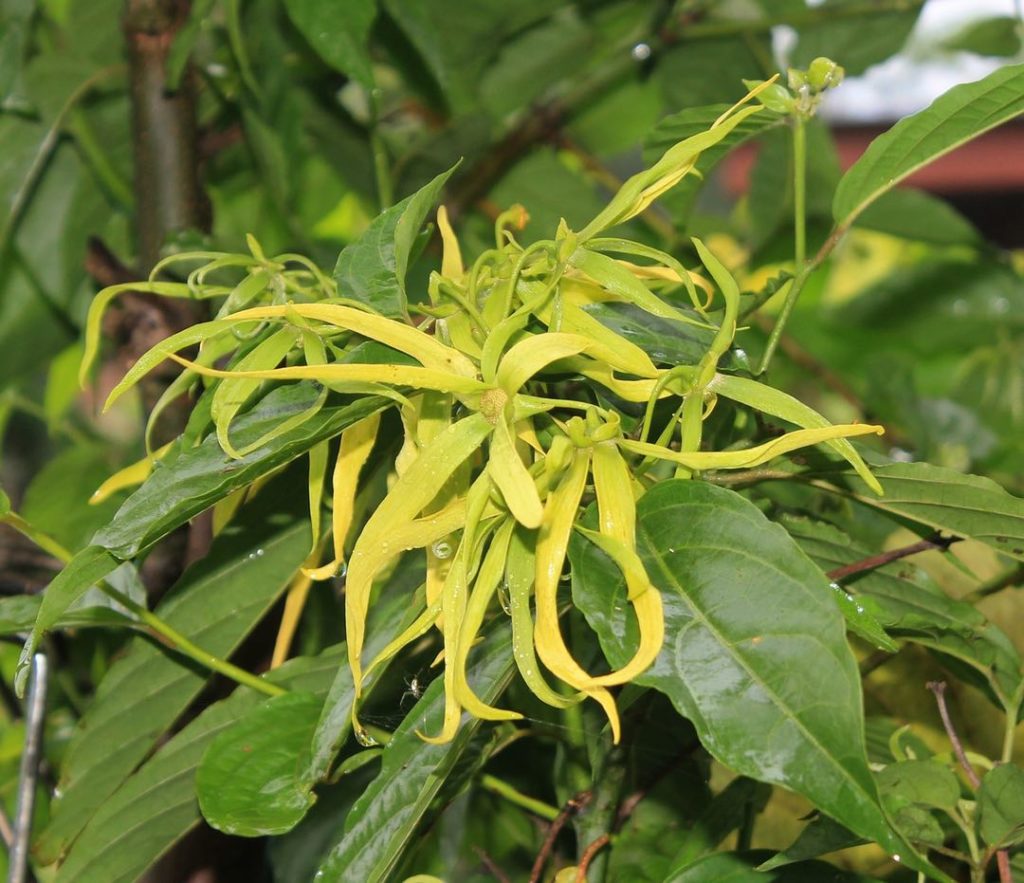
American Samoa
Ylang-Ylang “Moso’oi”
Cananga odorata

General Description / Cultural Significance
Ylang-Ylang (Cananga odorata), a fast-growing tropical tree of the Annonaceae family, is cultivated by the people of American Samoa for its fragrant yellow flowers, which are used to scent coconut oil, and bark that is used medicinally in the treatment of stomach problems, headaches, pneumonia, and malaria-like symptoms. The distinctive scent of Cananga odorata is described as being fruity, floral, and rich, but also delicate and similar to jasmine. Essential oils and perfumes made from the Ylang-Ylang flower are effective at improving mood, reducing anxiety and depression, improving physiological functions, and increasing oil production on the skin and scalp. Additionally, it is an aphrodisiac, used to stimulate sexuality.
Climate Change / Conservation Status
The effects of climate change are felt throughout all of the ecosystems in American Samoa as rising seas, temperatures, and invasive species destroy the once-rich soil and wetlands vital to the survival of the Ylang-Ylang tree and displace native flora of the islands. Sea levels are predicted to rise more than 0.91 meters (3 feet) by the year 2100, leading to greater ocean acidification and coastal erosion. This weakening of the coastline can lead to flooding and salt-water intrusion during high tides, storm surges and hurricanes, further damaging natural plants and trees and making agriculture increasingly difficult. Off the coast, local reefs, which serve as primary sources of food for Samoan villages, continue to suffer from coral bleaching and widespread disease despite the efforts of conservation groups and marine sanctuaries. These reefs are not only necessary for food and shoreline protection, but are also directly interwoven into the beliefs of Samoan culture.
Alternate Names
Apurvachampaka, chettu sampangi, karumugai (India)
Canang odorant (French)
Chirang, irang (Palau)
Derangerang, derangirang (Nauru)
Fereng, kradang naga (Thailand)
Fragrant Cananga
Ilahnglahng, ilanlang (Kosrae)
Ilang-ilang, alang-ilang (Guam)
Ilangilang, lengileng, alangilang, pur-n-wai, pwurenwai, seir en wai (Pohnpei)
Ilanilan (Marshall Islands)
Kenanga, chenanga, ylang-ylang (Malaysia)
Kernanga (Indonesia)
Kwara‘ae (South East Asia)
Ilang-ilang, alang-ilang (Philippines)
Lanalana (Hawai‘i)
Macassar-oil plant
Makosoi, mokohoi, makasui, mokosoi (Fiji)
Mohokoi (Tonga)
Moso‘oi (Samoa) Moto‘i (French Polynesia)
Moto‘oi, mata‘oi, mato‘oi (Cook Islands, Niue, Tahiti)
Sources
350 Pacific, n.d. American Samoa. 350 Pacific. [website]
Brainard, R., 2008. American Samoa. NOAA. [website]
Congressman Eni F. H. Faleomavaega, House of Representatives, Washington, D.C. This statement can be found on the World Sensorium original website.
School of Ocean and Earth Science and Technology, 2014. Climate Change in American Samoa. Pacific Islands Climate Education Partnership. [website]

